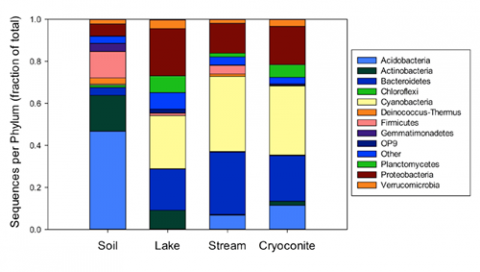
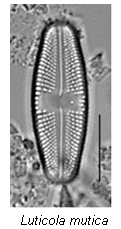
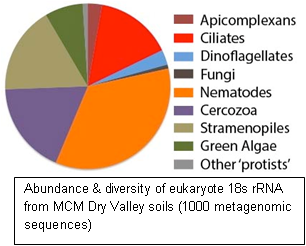
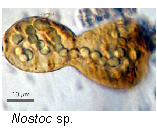
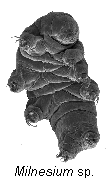

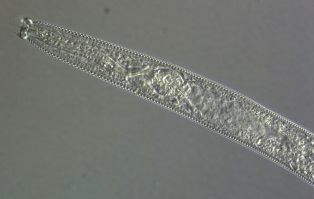
Although the abundance and diversity MDV biota is low relative to most other ecosystems, recent and ongoing work reveals that representative taxa from most of the major lineages of the Tree of Life are present and functioning. Diatoms in particular serve as excellent indicators of environmental change, and MCM DV diatoms showcase this utility via the Antarctic Freshwater Diatom Database (http://huey.colorado.edu/diatoms/about/index.php).Bacteria: Although taxonomic diversity is lower than most ecosystems, functional diversity in the MCM can be as high as temperate forests. Diversity and endemism is higher than previously thought, and highly structured by landscape unit.Archaea: Present in Lake Mat samples (Lake Fryxell moat), Lake Fryxell deep anoxic water and lake sediments, and a minor component of soil.Viruses: Lysogneic bacteria can make up to 89% of bacterioplanktonFungi & Yeasts: 7 endemic fungal species, one genus, 35 cosmopolitan genera; present in soils and lakes; 2 genera (5 species) of endemic yeasts.Protozoa (Ciliates, Cercozoa & Dinoflagellates): restricted to moist soils, streams & lakes; no known endemic morphospecies.Diatoms (stramenopiles): 62 species; distribution varies by environmental harshness: endemic species are common.Bryophytes: Dominant species (Bryum argenteum, B. pseudoturquetrum and Ceratodon purpureus) are widespread throughout Antarctica.Cyanobacteria, Algae & Lichens: 20 species of lichens, only 11 on the valley floor; the most common algal mats in the streams and moats are black (Nostoc sp.), orange(Oxcillatoria spp., Phormidium spp) and green (Prasiola calophylla, P. crispa).Metazoa: Tardigrada (8 species), Rotifera (4 species) Nematoda (5 species), Collembola (one species), Acari (two species).
